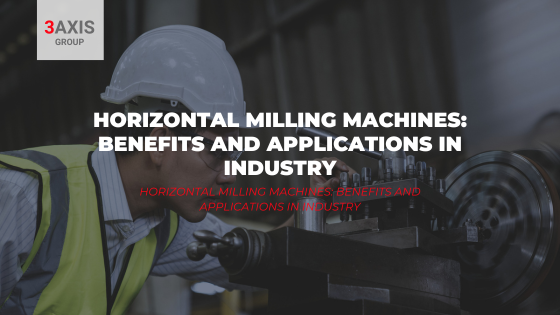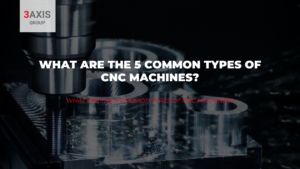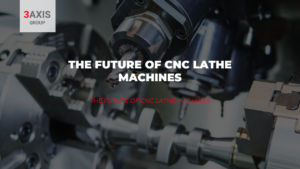Introduction to Horizontal Milling Machines
Being an industrialist in this ever-evolving industrial manufacturing landscape involves experiencing a war in which efficiency and precision are the weapons. One machine that can tremendously boost your machining capabilities is a horizontal milling machine. If you are, therefore, thinking of upgrading your already existing machinery or diversifying production processes, then knowledge of the benefits and applications of horizontal milling machines is a step you cannot overlook. So, in this post, we bring all you might want to know about these machines focused on their gains and technological advancements incorporated to date.
What is a Horizontal Milling Machine?
A horizontal milling machine is designed for the needs of milling different milling operations. Unlike the vertical milling machine, within the horizontal milling machine, the spindle is mounted in a horizontal position. This then makes it easier to use the resultant range of motion and machining capacity. It then gets proper chip evacuation. In other words, it offers a different perspective regarding some cuts kinds and removal of materials, making a very flexible addition in your manufacturing setup.
Key Components of Horizontal Milling Machines
- Spindle: The core part, mounted horizontally, offers substantial support for cutting tools.
- Table: A robust platform where the workpiece is held in place.
- Arbor: A long shaft used to mount the milling cutter and efficiently perform horizontal operations.
- Cutter: A rotating tool responsible for material removal; it comes in a variety of configurations and sizes for that purpose.
- Column and Base: The structural backbone that assures support and stability while machining.
Advantages of Horizontal Milling Machines
Increased Cutting Efficiency
One of the essential gains of horizontal milling machines is in cutting efficiencies. This efficiency translates to high-level productivity, further maintaining minimal operational costs; hence, an ideal choice concerning large-scale production runs.
Versatility in Machining
Horizontals are very versatile milling machines that can handle a wide range of machining applications. They can handle even complicated machining processes, including slotting, grooving, and contouring, among others. This means that their versatility is way advantageous to an industry that involves many varied and complicated machining operations since the machine can handle a number of them, therefore reducing dependence other machines.
Superior Chip Evacuation
Chip evacuation is the secret when it comes to producing quality and precise machined parts. In this respect, horizontals take the lead by having a gravitational advantage that puts away the problem of dealing with chips. In other words, the chips and other debris naturally get out of the cutting zone, obviating the likelihood of recutting and further ensuring an edge free of burrs that would otherwise be left. This is more so an advantage in machining parts using materials that produce a lot of waste.
Comparing Horizontal and Vertical Milling Machines
Structural Differences
The most noticeable comparisons between horizontal and vertical milling machines are in the orientation of the spindle horizontal mills house a spindle that runs parallel to the ground vertical mills reflect a spindle perpendicular. This structural variation places a difference in machine capability and the sorts of operations done.
Pros and Cons of Each Type
Horizontal Milling Machines:
Advantages:
- Increase the machine’s ability to cut faster, making large-scale projects more cost-effective.
- Advanced chip evacuation.
- Better flexibility with complex machining.
Disadvantages:
- More expensive.
- Requires a large space.
Vertical Milling Machines:
Advantages:
- Easier to work.
- Generally cheaper.
- More adaptability to tight spaces.
Disadvantages:
- Not as good for high production.
Technological Advancements in Horizontal Milling
CNC Technology Integration
The integration of Computer Numerical Control (CNC) in horizontal milling machines is a game-changer of the phase of the former versions. In the advent of this embedded advanced technology, CNC in horizontal milling machines did its operation with full control of the machining details, simple to the most complex geometrical profiles, with the least interference of human beings. So, as a result of the technology, there will be high efficiency in terms of precision; waste will be minimized; and the production rate spirals up, putting machinery in every industrial company at the topmost list in terms of investment.
Improvements in Machine Tool Design
More focused development and upgrading of, in the field of horizontal milling machines, is done wholly on the design of the tool features. The use of modern materials and the infusion of new engineering technologies have contributed to the total structure of strong and reliable horizontals that can withstand severe operating conditions. Other advanced machine features like automatic tool changers, improved cooling systems, and software interfaces have improved machine efficiency and user-friendly operation.
Visit our Marketplace and find a wide variety of second-hand horizontal milling machines from leading brands. Happy milling!
Discover also: How to Choose the Right Milling Machine: Complete Guide




